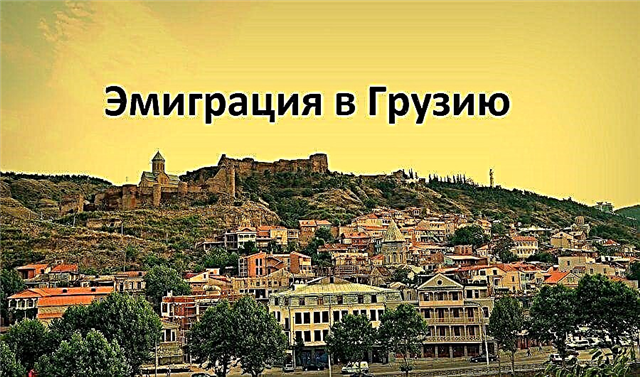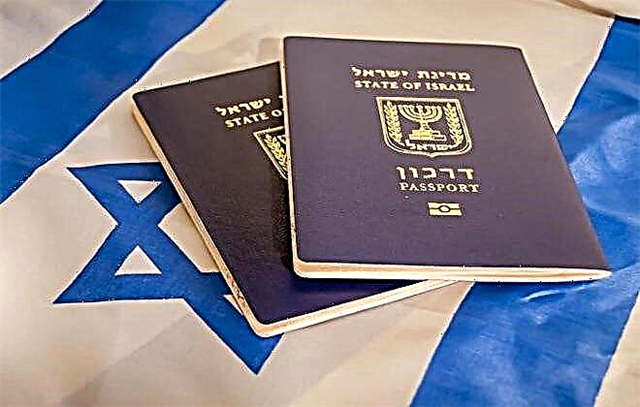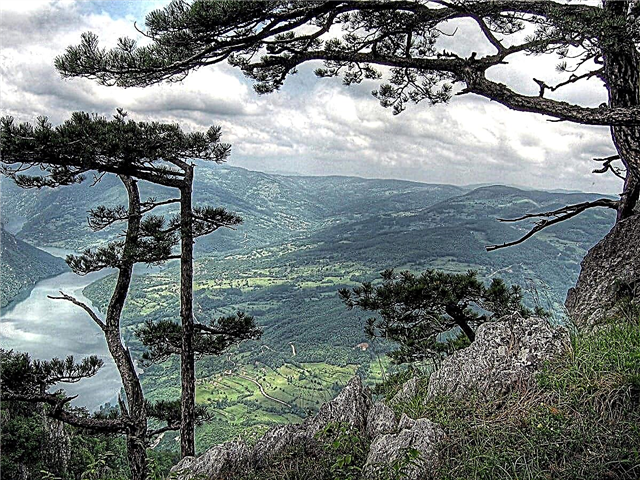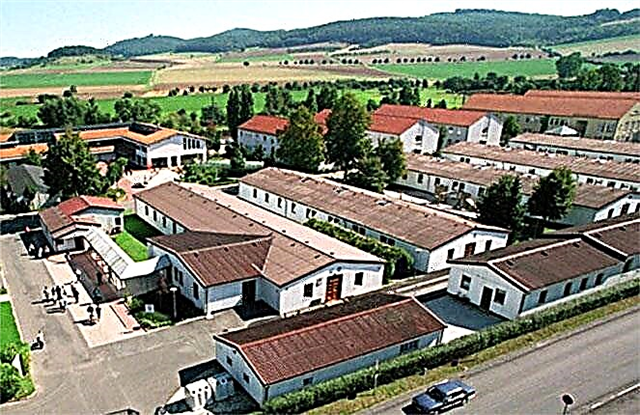15 km from the German city of Göttingen, in Lower Saxony, there is a small settlement, which plays the role of the first haven for all those who are looking for salvation and protection in Germany. By the early 2000s, this place was practically deserted, and it was decided to transform its territory into a memorial museum. But by 2021 the situation had changed dramatically, and today the once-lost settlement is again overcrowded with refugees and migrants in need of asylum. Knowing what the Friedland camp is today will be useful to anyone who plans to move to this part of Europe as an immigrant.
How did the camp start
The appearance of a place of temporary residence of migrants in this particular part of the country is not accidental. The camp was founded at the very end of World War II. It was here that three zones of occupation came into contact: Soviet (Thuringia), British (Lower Saxony) and American (Hesse). If we add that the most important railways for that time between Kassel and Hanover passed between the three of them, then we can say that the place of foundation of the settlement was predetermined.
The idea of arranging the camp was put forward by the British troops, who took a fancy to the territory of the research laboratories of the University of Göttingen. The Friedland camp for migrants began working on September 20, 1945. Over the years, it has been used for different purposes:
- the first inhabitants were freed prisoners who were returning from the USSR;
- further defectors followed from the territory of the GDR to the lands of the FRG;
- in the 80s of the last century Soviet migrants were settled in Friedland;
- later - "Russian Germans".
In the middle of the 20th century, there were a considerable number of such places of settlement of late settlers. But due to the fact that their flow has gradually decreased, today only Friedland remains active.
The article "Late Migrants" will help to understand the peculiarities of migration to German territory.
How can you get to the camp
You can get to Friedland in different ways:
- by plane to Hanover, from there by train to Göttingen and then a little more to the final destination by train.
- by rail. This way of arriving from Russia is not the most convenient: only in Germany you will need to make two transfers - in Berlin and in Kassel. Considering the number of things a migrant can have, it becomes clear that this is not an easy option.
- flight to Hanover, then by taxi to the camp. This pleasure will cost about 220 euros.
- by bus from the Russian Federation - the journey is the longest and not the most comfortable.
Alternatively, you can contact intermediary companies that provide resettlement services in Germany, meet at the airport and then take care of all the transfers.
What awaits the settlers in the camp
The main goal of the work of the camp is the registration of new arrivals and their resettlement throughout the German territory. The period for which newbies can be accepted is 3-4 days. This time is enough for the following procedures:
- checking the available documents and the compliance of the data in the questionnaire with them;
- fluorography;
- passing interviews with representatives of the employment center.
In order not to get confused in the upcoming actions, the refugee receives a special leaflet containing the schedule and location of certain events.
Throughout this period, the migrant lives in the room allocated for him. Immediately after arrival, new tenants are issued coupons to visit the dining room. And although food at public expense cannot be called varied and nutritious, it is enough to satisfy basic needs. There is a shop on the territory of the settlement where you can buy missing products.
The main problem of those seeking asylum is the lack of knowledge of the German language. For this purpose, it would be good to enlist the support of relatives, if they exist in Germany. If not, the state is ready to provide assistance by providing an interpreter.
In the process of identification and registration, the migrant has the opportunity to change the spelling of the surname and first name according to the German model.
For example, “Ivan” can become “Johan”, and “Stepan” - “Stefan”. Please note that you can make changes and abandon the Russian patronymic (it is not accepted in Germany) only once for free. All further attempts to make adjustments, even if it is just one letter, will cost 200 euros.
As for the ethnic composition of the camp, today it accepts not only ethnic Germans. In 2009, the first refugees from Iraq arrived here. In 2013, Friedland became a refuge for the first Syrian migrants. Today, this organization is working beyond its capabilities, providing a roof over their heads to immigrants from Libya, Afghanistan, and Syria.
How is the distribution for permanent residence?
The final stage is the distribution already for permanent residence throughout the country. Only in recent years, this procedure began to be carried out taking into account the wishes of the migrant. Previously, he had no choice and had to put up with any decision of the commission.
To get to the right place, a beginner only needs to indicate in his profile the region and even the settlement in which he would like to settle. However, no one can guarantee that this desire will be satisfied. But in any case, officials are trying to meet the applicant halfway.
The migrant receives a document with his new data, which will serve as his identity card. Together with him, the late migrant is awarded tickets to the place of new residence and 102 euros for each of the family members. This amount will allow at least partially offset the funds spent on the trip to Friedland.
It is important to understand that a refugee camp in Germany is the primary reception point for those in need. The document that is issued to them after registration only confirms that they have arrived in the country legally, have been registered and are ready to move permanently to the region of their choice. The process of legalization and recognition of a candidate as a migrant or refugee begins at the place of his permanent residence.
What is the Otto Benecke Foundation
Migrants who managed to get a higher technical education before moving to Germany have special privileges. In particular, an engineering degree allows a newcomer to receive a referral to the Otto Benecke Foundation.
The main mission of the Foundation is to provide a special non-refundable scholarship to engineers who came from Eastern Europe. The money received allows you to re-profile or improve your existing qualifications. This makes it possible to adapt to the German labor market as much as possible and get a good job with a high income. Foreign specialists are undergoing retraining at one of the German universities, with which the Foundation has signed an agreement. In addition to this project, the organization supports all kinds of educational programs that allow migrants to arrange their future in new conditions.
Foreign specialists are undergoing retraining at one of the German universities, with which the Foundation has signed an agreement. In addition to this project, the organization supports all kinds of educational programs that allow migrants to arrange their future in new conditions.
Rapid Integration Courses
A migrant who has arrived at his permanent place of residence is worried about the speedy integration into a society that is still alien to him.Thanks to the help of the state, which assumes not only the reception of refugees and displaced persons, but also their arrangement, the late displaced person gets the opportunity, on the basis of his registration certificate, to take advantage of free courses that will help to assimilate with the local population as soon as possible. The duration of the courses is 6 months. During the training, the beginner receives basic information on all aspects of life in Germany:
- language,
- legislation,
- taxes,
- features of the culture and traditions of the German nation.
The knowledge acquisition process is divided into 6 modules. Each of them contains 100 hours of lessons. The entire course is divided into two main groups: language and orientation. Lessons in the first of them allow you to master German in the most necessary areas: a visit to a doctor, a telephone conversation, a trip to a cafe or restaurant. The orientation course introduces migrants to culture, legislation and other adaptation issues.
After the courses are completed, the student will have to pass the B1 exam and receive a certificate. If the migrant has plans to enter a university, he will have to continue his studies.
Conclusions
Conceived back in 1945 as a camp for settlers, Friedland today welcomes people from all over the world who are fleeing war and unfavorable living conditions.
Russian migrants can get here by direct bus or plane. The further journey upon arrival in the country will have to be planned taking into account the composition of the family and the amount of luggage available, since there are more than one transfer to be made.
Upon arrival at the camp, beginners can count on living space, meals, and medical support. After registering and filling out all the necessary documents, migrants are sent to their place of permanent residence, where they will begin the process of legalizing their status in Germany.











